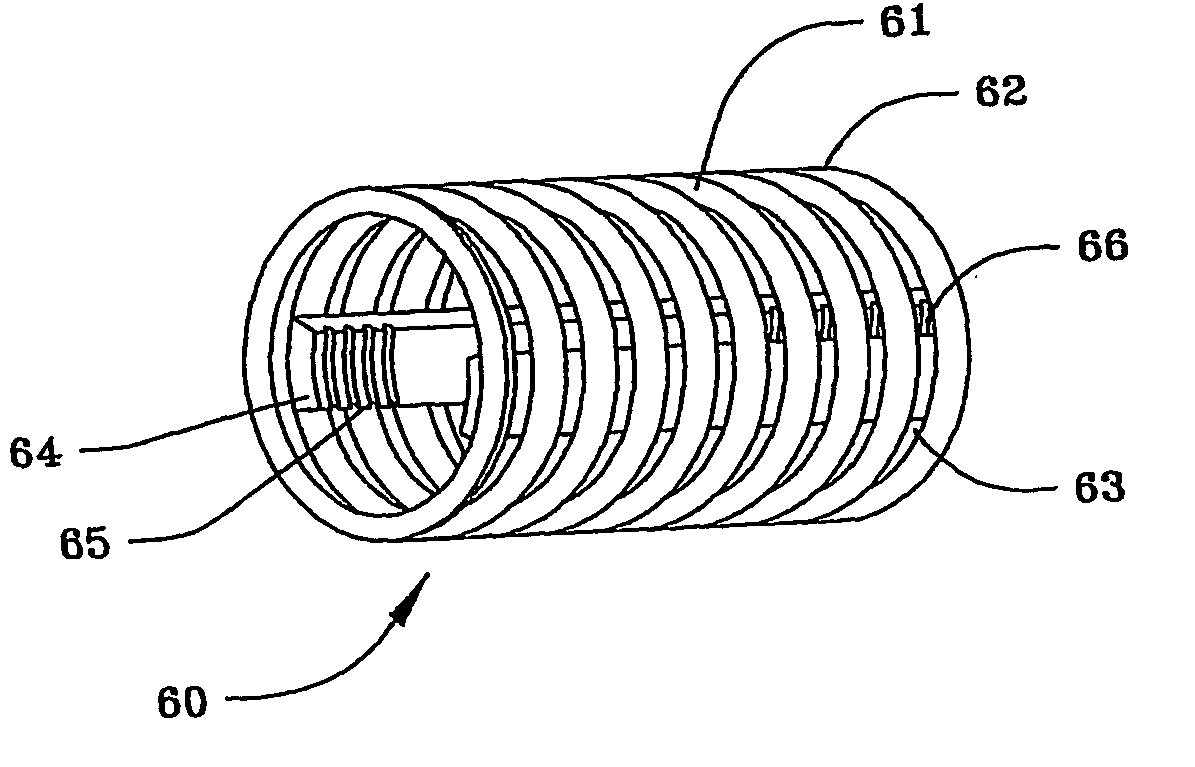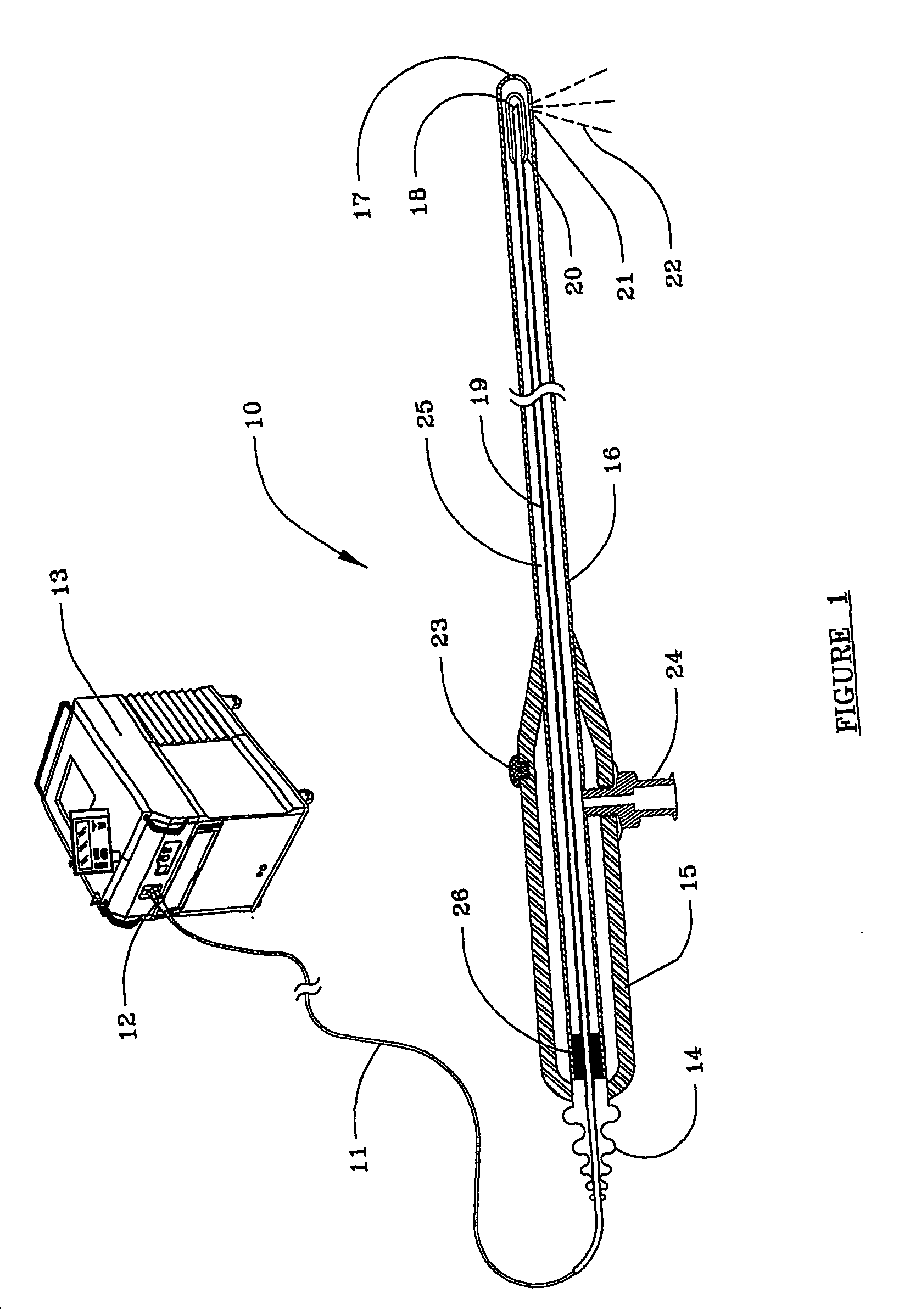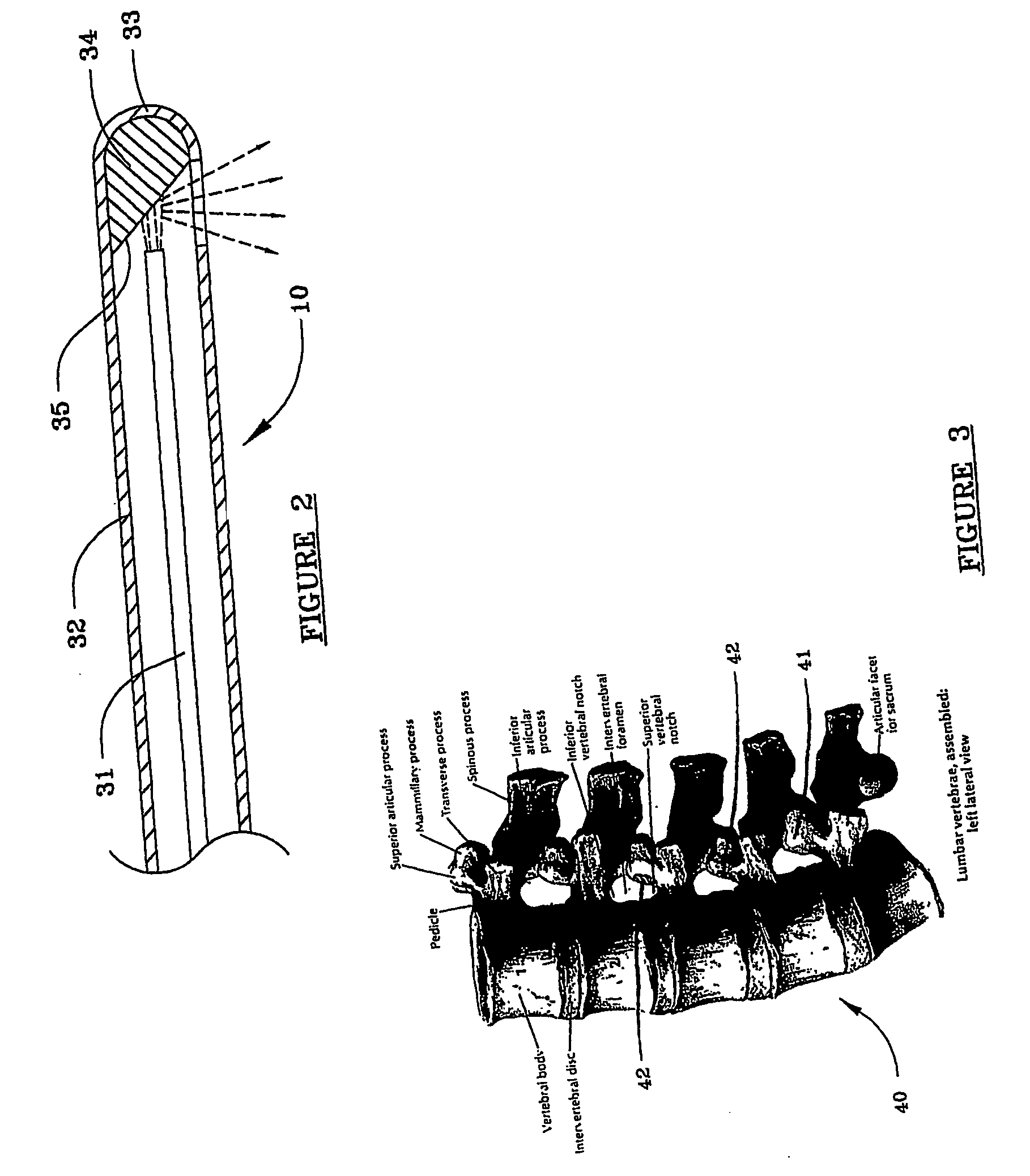Devices and methods for minimally invasive treatment of degenerated spinal discs
a technology of spinal discs and devices, applied in the direction of spinal implants, joint implants, prostheses, etc., can solve the problems of debilitating back, leg and neck pain, added many more billions of cost annually, and inability to use intra-discal therapy, etc., to achieve the effect of preserving the mobility of the spin
- Summary
- Abstract
- Description
- Claims
- Application Information
AI Technical Summary
Benefits of technology
Problems solved by technology
Method used
Image
Examples
first embodiment
[0103]FIG. 5(a) illustrates a cage 60 of the spinal stabilization device of the present invention. Cage 60 comprises a helical metal coil 61, which may be made of stainless steel or other metal, but is preferably made of titanium or a nickel-titanium alloy. Alternatively, cage 60 can also be made of high density polyethylene or a carbon wire reinforced, strong resilient plastic. Coil 61 can be formed from a metal ribbon, whose exterior edges 62 are beveled into a sharp point and function as threads, as shown, or can be formed from a metal ribbon, wire or rod of any other desired cross section, with at least small spaces 63 between each of the individual coils 61 of cage 60.
[0104] Two or more longitudinal bars 64 are attached by crimping, welding or other means known in the art to the interior surface of coils 61. Bars 64 are positioned opposite each other in a generally co-planar relationship and have helical threads 65 and 66 on at least a portion of the interior of their distal an...
embodiment 140
[0136] As seen in FIG. 13(a), another stabilization device embodiment 140 consists of distal end nose piece or head 141, proximal end piece or plate 142 and outer and inner slats 143 and 144, respectively, which are made of a superelastic, shaped memory metal, such as nitinol. Outer slats 143 and inner slats 144 are attached to distal and proximal end pieces 141 and 142, respectively, by screws, pins, crimping, welding or any other means known in the art. Outer slats 143 contain points or spikes 145 on their outer surface, which function as described above. The plate 142 is similar in structure to the plate 132 which, in turn, is similar in structure to the plate 80. The head 141 is similar to the head 131. The inner slats 144 extend between the radial proximal end faces of the pieces 141 and 142 respectively while the outer slats 143 define a bird-like cage, surround the slats 143, and extend between the outer circumferential distal end surfaces of the pieces 141 and 142 respective...
embodiment 160
[0139] As illustrated in FIG. 15, yet another spinal stabilization device embodiment 160 consists of distal end nose piece or head 161 and proximal end piece or plate 162 similar in structure to the head 70 and plate 80, respectively. The flat metal sheet 150 shown in FIG. 14 has been formed into a tube 163. Helical threads 164 have been formed on the interior surface of the tube 163 adjacent the proximal and distal ends thereof to cooperate and receive threads 165 and 166 formed about the exterior of end pieces 161 and 162 respectively in a manner similar to that described in connection with the FIG. 9 embodiment. Stabilization device 160, when heated above its transition temperature, can expand as described above into the shapes shown in FIGS. 12(b) and 13(b) or any other desired shape. Points or spikes 153 on the exterior of device 160 function as aforesaid.
[0140] As shown in FIG. 16, two separate, flat sheets of superelastic, shape-memory metal 150, such as nitinol, with cut out...
PUM
| Property | Measurement | Unit |
|---|---|---|
| Temperature | aaaaa | aaaaa |
| Diameter | aaaaa | aaaaa |
| Shape memory effect | aaaaa | aaaaa |
Abstract
Description
Claims
Application Information
 Login to View More
Login to View More - R&D
- Intellectual Property
- Life Sciences
- Materials
- Tech Scout
- Unparalleled Data Quality
- Higher Quality Content
- 60% Fewer Hallucinations
Browse by: Latest US Patents, China's latest patents, Technical Efficacy Thesaurus, Application Domain, Technology Topic, Popular Technical Reports.
© 2025 PatSnap. All rights reserved.Legal|Privacy policy|Modern Slavery Act Transparency Statement|Sitemap|About US| Contact US: help@patsnap.com



